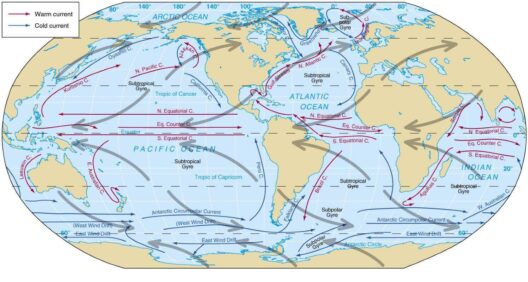Have you ever gazed at the night sky and pondered how the Earth’s orbit might influence the climate we experience? It’s a curious thought that connects the cosmic dance of planets with the pressing issue of global warming. Delving into this interplay reveals how the Earth’s trajectory around the sun affects our climate—and consequently, our environment.
The Earth’s orbit is not erratic; it follows an elliptical path, influenced by gravitational forces from the sun and other celestial bodies. This orbit changes over long timescales, exhibiting phenomena such as eccentricity, axial tilt, and precession. These variations significantly impact the distribution of solar energy across the planet, which is fundamental to understanding climate changes over geological epochs.
Firstly, let’s explore the concept of eccentricity. This refers to how elliptical or circular Earth’s orbit is. The shape of Earth’s orbit oscillates between more circular and more elongated every 100,000 years. During periods when eccentricity is high, the distance from Earth to the sun varies significantly throughout the year. This variance in distance results in uneven solar radiation exposure, leading to climatic fluctuations. The more elongated orbit can exacerbate seasonal extremes, contributing to colder winters and hotter summers, particularly in the northern hemisphere.
Next is the axial tilt, or obliquity. The Earth’s axis is tilted approximately 23.5 degrees relative to its orbital plane, influencing the intensity and duration of sunlight received at different latitudes throughout the year. Over a period of about 41,000 years, this tilt can change slightly. Greater tilt angles lead to more severe seasonal contrasts—hotter summers and colder winters—while reduced tilt minimizes these contrasts. Such shifts can affect glacial and interglacial periods, demonstrating how axial tilt plays a crucial role in Earth’s long-term climate dynamics.
Alongside these two phenomena is precession, or axial precession, which refers to the gradual wobble in Earth’s rotation due to the gravitational forces acting upon it. This wobble completes a cycle approximately every 26,000 years, influencing the timing of seasons in relation to Earth’s distance from the sun. The interplay between precession, eccentricity, and axial tilt comprises the Milankovitch cycles, which are fundamental to understanding glacial and interglacial periods throughout Earth’s history.
This cosmic context is essential in grappling with contemporary issues like global warming. Over millennia, these astronomical forces have governed the Earth’s climate, but the rapid increase in greenhouse gases due to anthropogenic activities is now superimposed on these natural cycles. The concern arises: Can changes in Earth’s orbital patterns provide a safeguard against human-induced climate change, or will they exacerbate the situation?
As the Earth presently warms due to increasing levels of carbon dioxide and other greenhouse gases, the question remains: how significantly will it interact with natural orbital variations? Current climate models indicate that recent temperature increases far exceed those predicted by natural cycles alone. The warming is not merely a natural occurrence; it is propelled largely by human actions. Therefore, understanding how natural factors might currently exacerbating this warming is vital.
Climate scientists utilize the insights from orbital mechanics to better predict future climate scenarios. For instance, periods characterized by high eccentricity and increased solar radiation culminate in intensified warming trends. If Earth were to enter such a phase, we might witness accelerated melting of ice caps, rising sea levels, and extreme weather patterns—even more pronounced than what is already being experienced.
Moreover, there are potential feedback loops that emerge from this intricate relationship. For example, as polar ice melts, the albedo effect diminishes—darker ocean water absorbs more solar energy compared to reflective ice. Such phenomena may tilt the scales toward exacerbated global warming, creating a feedback loop that motivates further ecological changes. In this regard, Earth’s orbital cycles may unwittingly influence the trajectory of human-induced climate change.
Considering the enormity of these interconnected systems can be daunting. It raises a playful, albeit profound challenge: How can humanity learn to anticipate and adapt to these celestial influences while mitigating its impacts on the climate? If we regard Earth’s orbit as a cosmic clock, can we harmonize our environmental practices with the celestial rhythms instead of resisting them?
One potential solution lies in fostering greater awareness regarding our impact on the planet. Educating communities about the importance of conservation, embracing renewable energy sources, and reducing carbon footprints can collectively alter our trajectory toward sustainability. After all, while we may not control the cosmos, we have the power to influence our local environments and foster resilience against the cosmic challenges that loom on the horizon.
In conclusion, the Earth’s orbit—shaped by eccentricity, axial tilt, and precession—plays an incredible role in influencing our climate over geological timescales. While these natural forces have governed climate for millennia, the modern-day challenge is the rapid acceleration of climate change resulting from human activity. The interplay between these cosmic and terrestrial dynamics creates a complex narrative on global warming that requires our urgent attention and thoughtful action. Striking a balance between understanding the cosmos and preserving our planet for future generations is the challenge that rests before us.






